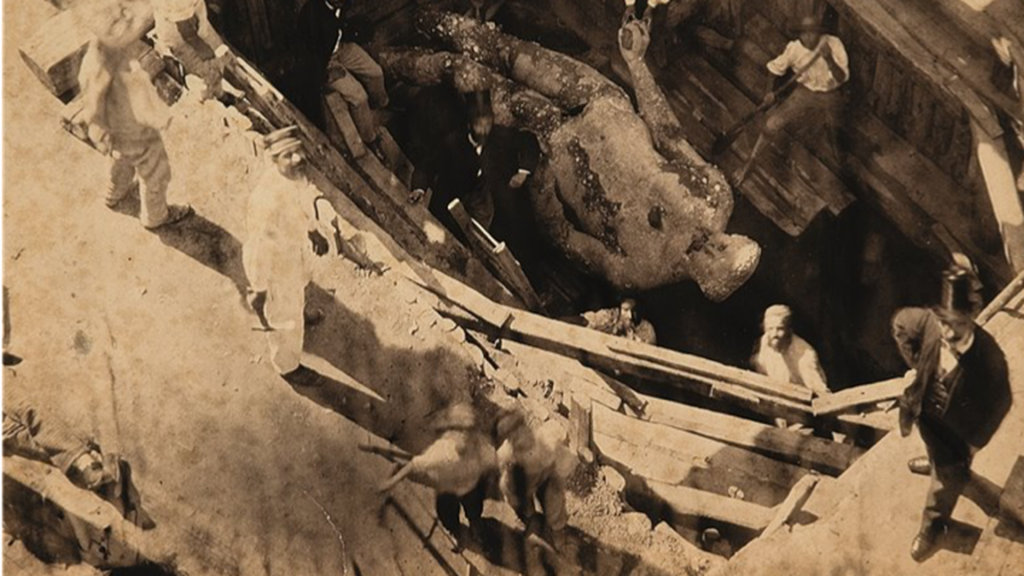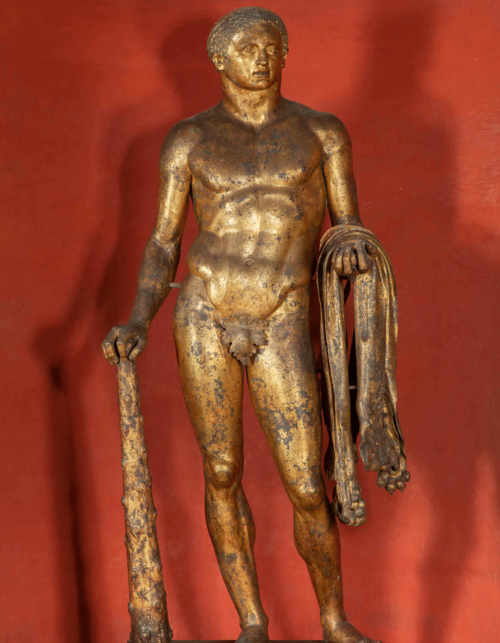Archaeology & History
Vatican Restorers Are Working to Bring a Colossal Roman Sculpture of Hercules Back to Its Golden Glory
The conservation work, funded by the Patrons of the Vatican Museums, will cost around $113,588.

The conservation work, funded by the Patrons of the Vatican Museums, will cost around $113,588.

Adam Schrader

A gilded bronze sculpture, Hercules Mastai Righetti, now housed in the Vatican Museums, is undergoing a $113,588 facelift to remove centuries of grime from its golden surface.
The work depicts the young demigod Hercules leaning on his club, holding the apples of the Hesperides (evening nymphs), in his left hand. The identity of the original sculptor remains unknown, but the work is believed to date from the second to third century B.C.E.
The statue was first discovered in 1864, under the courtyard of the Palazzo Pio Righetti in Campo de’ Fiori in the area of the ancient theater of Gnaeus Pompeius Magnus, according to the Patrons of the Vatican Museums (PAVM), which is funding the restoration. It was found during construction on a banker’s villa and then donated to Pope Pius IX, who placed it in the papal collection.
Scholars believe that lighting struck the statue in ancient times and it underwent a ritual burial based on Roman custom. The sculpture bears an inscription with the letters “FCS” which stands for “fulgur conditum summanium,” a Latin phrase meaning: “Here is buried a Summanian thunderbolt.” Ancient Romans believed objects struck by lightning held divinity because Summanus was the god of nocturnal thunder.

The restoration of the Hercules Mastai sculpture, funded by the Patrons of the Vatican Museums (PAVM), will cost €100,000, or around $113,588.
Vatican Museum restorer Alice Baltera said in remarks to the Associated Press that the original gilding is “exceptionally well-preserved,” likely because it had been buried after the lightning strike.
But the current restoration has been called “very complex” because of the structure and size of the sculpture. Measuring 13 feet tall, it is one of the largest ancient Roman bronzes to survive to the present day.
Restorers are now working to undo some of the previous restoration work done by the Neo-Classical sculptor Pietro Tenerani at some point in the 19th century, according to the AP. Such efforts include replacing the plaster added to the sculpture with fresh casts made of resin and removing a wax coat that had been added to the surface.